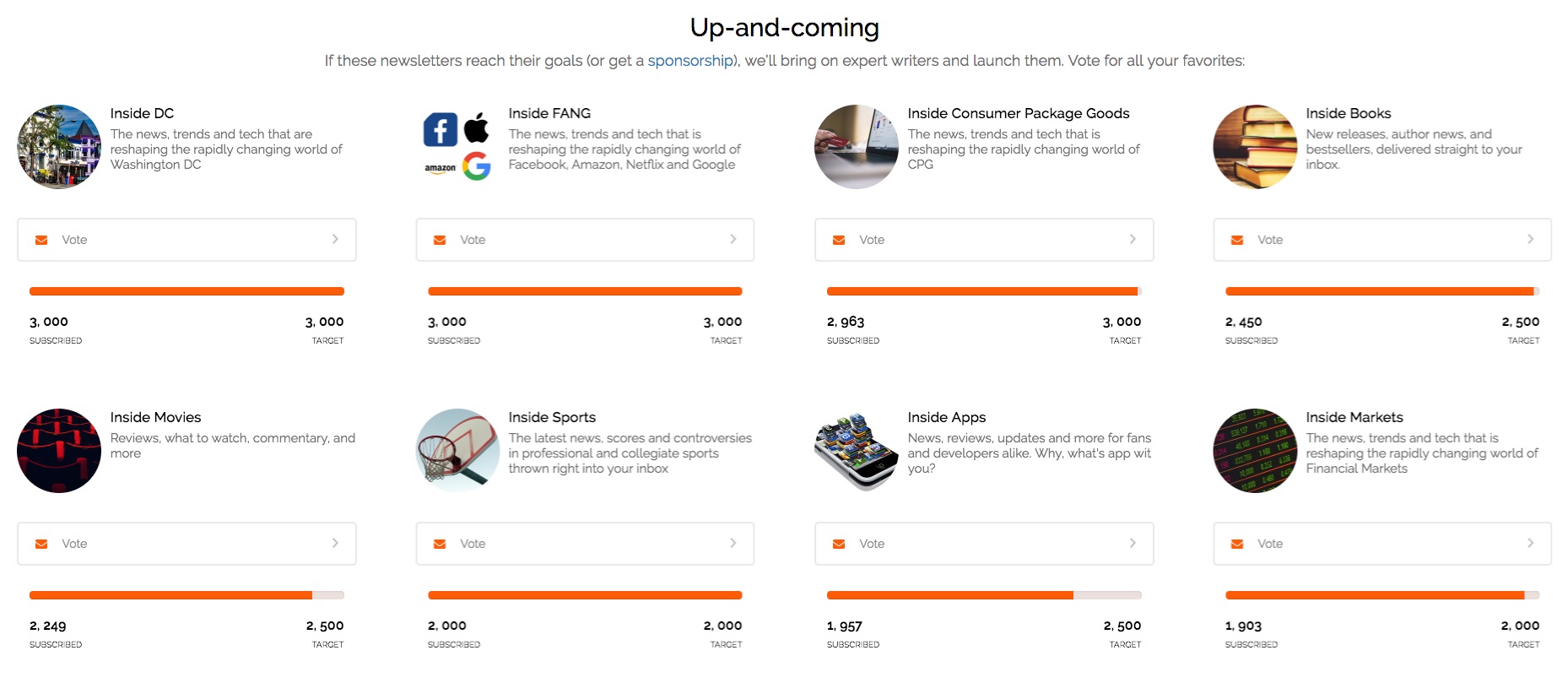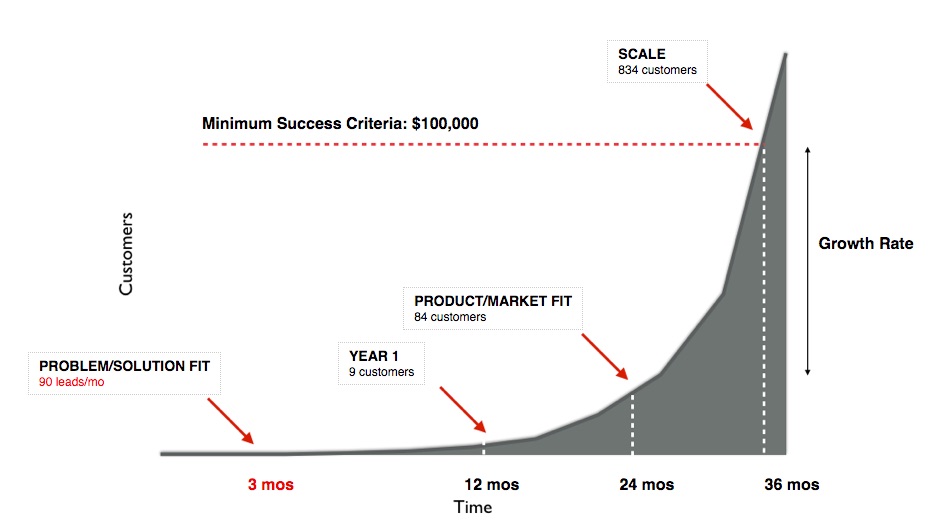Consulting, convening, coding, covering new ground, plus occasional commentary.
coding
What 1000 true fans means for today’s journalism startups
The journey to 1000 true fans is an opportunity to refine your value proposition
(Scroll down to continue reading)
This essay, started two weeks ago — where does the time go!? — seems particularly timely in light of several recent articles about How much people make from email newsletters, Should you start a newsletter, and The New Social Network That Isn’t New At All. Each of these articles touches on the idea of speaking directly to your “true fans,” which is what I’ve been thinking about lately.
I started jotting down notes after reading this excellent interview by Simon Owens recently. He was interviewing John Yedinak, the co-founder (along with his brother George Yedinak) of a “B2B media company that covers a $7.5 trillion industry,” and unpacked how the Yedinak’s company had reached profitability.
But, instead of my usual fascination with the business models behind media startups, my attention was instead drawn to the question “What kind of audience scale do you need to achieve to make this model work?” This was Yedinak’s answer:
Typically what we find is once we get a thousand people to sign up for our email list, we can monetize it.
Yedinak goes on to explain:
I know to the general public that doesn’t sound like a lot, but it’s about the quality of the audience, not the quantity. It’s one of those things where once we are able to get a thousand people on a vertical, [we] start to see some network effects. [We] start to see that growth a little faster.
This is a pattern that plays out again and again the stories of journalism entrepreneurs who are navigating their way toward a viable news or information business.
You don’t need a million casual readers, just 1000 committed ones
Some might dismiss Yedinak’s comments, however, and claim that B2B media is different in some fundamental way than consumer-facing or public-interest media, and yet there are signs that the “1000 true fans” theory holds approximately true across a wide range of journalism enterprises — sometimes it’s actually a thousand, other times it’s 400, 1500, or 5000.
The key point, however, is that a journalism upstart doesn’t need to chase a daunting goal of one million true fans; it’s entirely possible to build a successful journalism business around a more attainable number.
Take, for example, Inside.com’s impressively-successful and still-growing newsletter business. NiemanLab has a great piece on the company, and how they successfully raised $2.6M, grew to 750,000 subscribers, and are seeing revenue in excess of $1M annually.
That may sound unattainable for an upstart reporter, but their strategy is staggeringly simple:

Screen shot of Inside.com’s front page, April 2019.
Just take a scroll down the Inside.com front page and you’ll see a section of “Up-and-coming” newsletters (shown above), each with the invitation for potential true fans to vote for their favorites. If a newsletter hits its target — often in the low thousands — Inside.com commits to “bring on expert writers and launch them.” In effect, they’re establishing their base of potential true fans before launching the product, which helps to ensure engagement and adequate audience size to support selling advertising.
In fact, you don’t have to look very far to see this pattern almost everywhere you look in the stories of successful journalism startups.
Once you’ve found your 1000 true fans, it reasons that there is a network effect that starts to happen — a positive feedback loop giving your project more and more momentum.
A tried and true strategy
American investigative journalist and writer I.F. Stone used this theory to build his list of true fans from 5,200 in 1952 to 20,000 by 1963 and 70,000 by 1971. According to public record, “by the time it closed, with 70,000 readers, it was grossing $350,000 per year or, in year 2007 dollars, perhaps over $2,000,000 per year.”
That’s impressive in retrospect, but what about today? Indeed, there are many contemporary examples all over the U.S. and Canada — reporters who’ve taken the risk to stake out on their own, and who are working to find their 1000 true fans.
Take, for example, Tasneem Raja’s project The Tyler Loop. According to Raja, “The Loop now has about 120 members and needs to reach 400 members to be sustainable.”
A bit further along the path to sustainability is Matt Kiser’s What The Fuck Just Happened Today (WTFJHT). The project launched in 2017 to “chronicle what was happening each day in national politics over the course of Trump’s first 100 days in office.” Just a short time later, the site has secured in excess of 1500 true fans who now contribute more than $14,000 USD / month toward operating expenses. And WTFJHT’s true fans contribute more than just money, they also are responsible for some of the site’s proofreading and copyediting, as well as technical upgrades.
The recent Buzzfeed article Paid Email Newsletters Are Proving Themselves As A Meaningful Revenue Generator For Writers provides a few more case studies, and I’ve previously noted other good examples beyond newsletter producers.
(If you have an interesting example to share, please leave a comment or find me on Twitter.)
Getting to 1000 true fans is not as crazy as it sounds
The important thing to remember when you’re starting out, however, is that your path to 1000 true fans is probably not going to be linear — and, in fact, that’s a good thing.
In the Journalism Entrepreneurship Boot Camp, participants are encouraged to think about how growth typically happens in non-linear “jumps.” For example, your first target might be to go from zero to 10 true fans, and your next jump would be from 10 to 100. Ash Maurya calls this the “10x growth model:”

The path to 1000 true fans starts with just one.
It might not always be a tenfold increase at each jump— perhaps twofold or threefold at the start. Conversely, in my experience, it’s rare to see a consistent “three new true fans every day for a year,” and that can result in what’s referred to as the “trough of disillusionment:” when you’ve seen no increase in your true fans for weeks at a time. But that’s normal because growth tends to happen in jumps.
The advantage of the “trough” (if you can avoid the disillusionment!) is that it provides you with the unique opportunity to grow your news startup slowly at first, and to take the time necessary to figure out how to really, really deliver value to those true fans.
When you have 10 true fans, you can:
- respond quickly to their questions
- call them on the phone;
- invite them out for a conversation;
- ask them to participate in an experimental event.
Once you’ve grown to 1000 true fans, this becomes exponentially more difficult.
The opportunity here is to take advantage of those early days to refine what you’re offering, and to really understand the value you’re bringing into people’s lives.
There is no crystal ball for the future of journalism
As I wrote last month, many people in the journalism industry laughed when BuzzFeed announced its foray into hard news in 2011. Since then, BuzzFeed has become a two-time Pulitzer Prize finalist and has won numerous prestigious awards for its reporting.
The lesson there is simple: nobody knows what the future of is going to look like; nobody has a crystal ball to say what’s going to replace local newspapers as their fixed costs become increasingly unsustainable.
You can start building that future today. And the good news is that it starts with finding just one true fan.
About
Hi, I'm Phillip Smith, a veteran digital publishing consultant, online advocacy specialist, and strategic convener. If you enjoyed reading this, find me on Twitter and I'll keep you updated.

Related
Want to launch a local news business? Apply now for the journalism entrepreneurship boot camp
I’m excited to announce that applications are now open again for the journalism entrepreneurship boot camp. And I’m even more excited to ...… Continue reading
Previously
The mysterious “manscaping” trimmer in my feed and what it means for tomorrow's journalism organizations
From the future
Hidden in plain sight: 20+ examples of the future of news and information